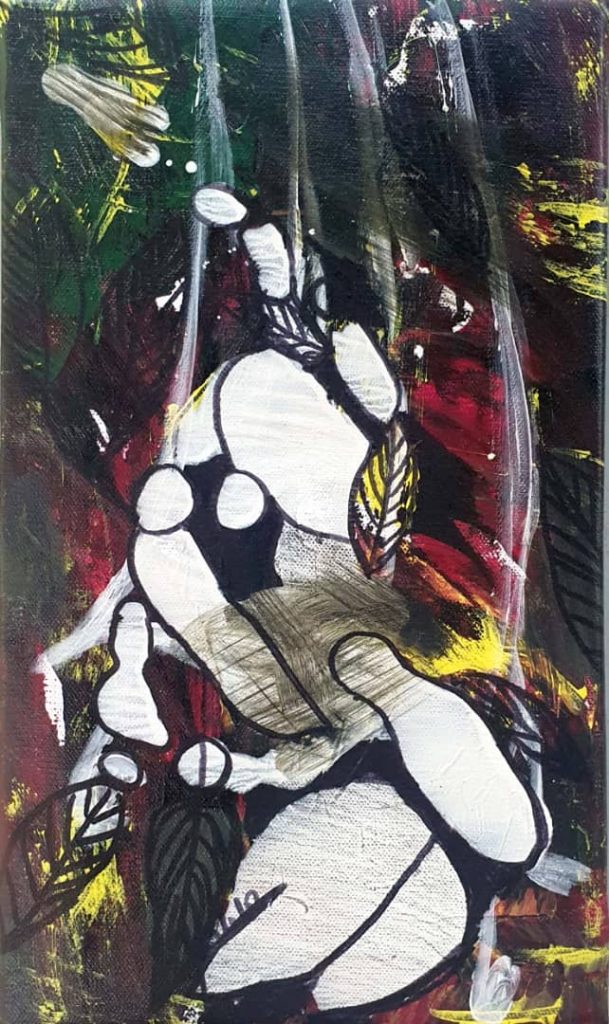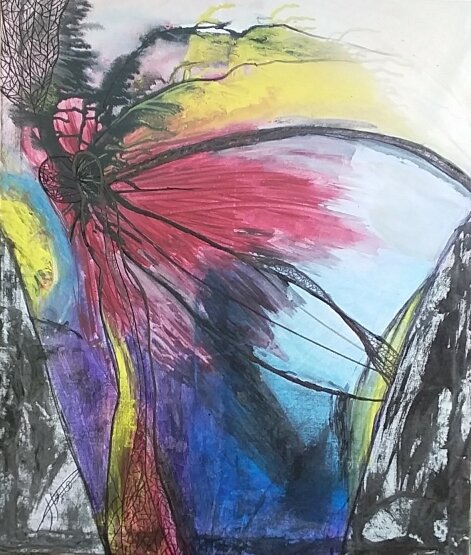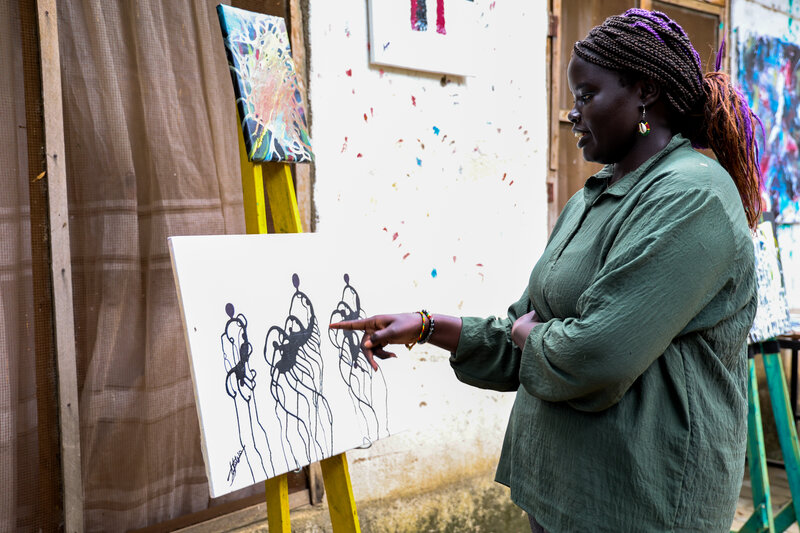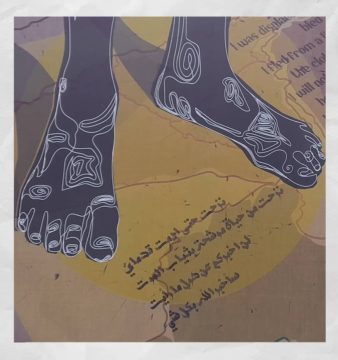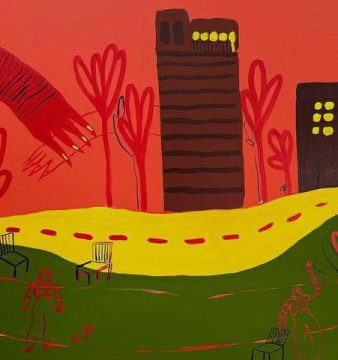Sudanese Artist Halah Taha is Refashioning Lawa in South Sudan
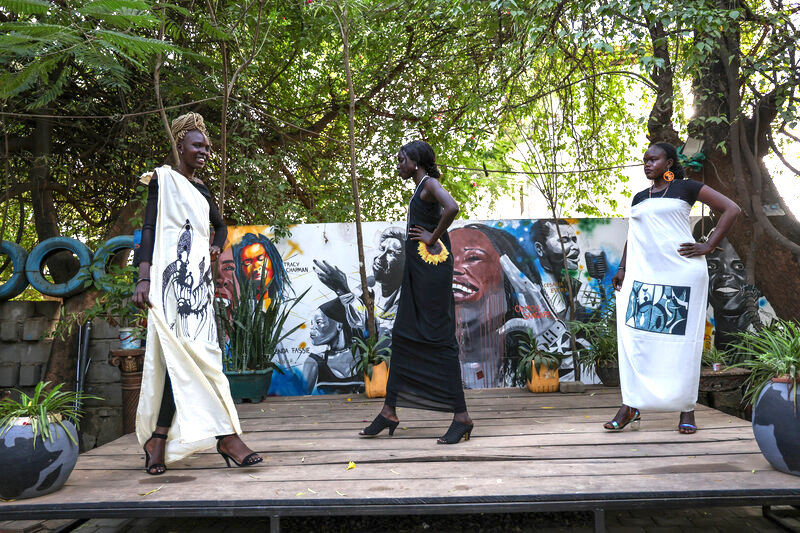
‘Why the Lawa specifically?’ is the question that came into the minds of people when they heard about the Lawa art exhibition by 43-year-old Sudanese artist Halah Taha, who recently moved to Juba from Khartoum, due the ongoing war in Sudan. The curiosity drove dozens of people to Taha’s exhibition at The Baobab House in Juba, South Sudan on 13 August 2023.
According to Taha, the Lawa exhibition was inspired by the Shilluk tribe, one of the third largest ethnic group in South Sudan. They are Nilotic group that lives along the Nile and Sobat Rivers. ‘I was working on scientific research about art and fashion in Sudan, and this traditional costume of Shilluk tribe caught my attention for its simplicity,’ she said. The traditional costume Taha is referring to is Lawa, which is worn by Nilotic tribes such as the Shilluk, Nuer and Dinka, as well as Equatorian tribes such as Bari and Mundari. It is a large piece of fabric that is tied on the left shoulder for men and on the right for women. It has many types and colours according to the tribe and clan, gender and age.
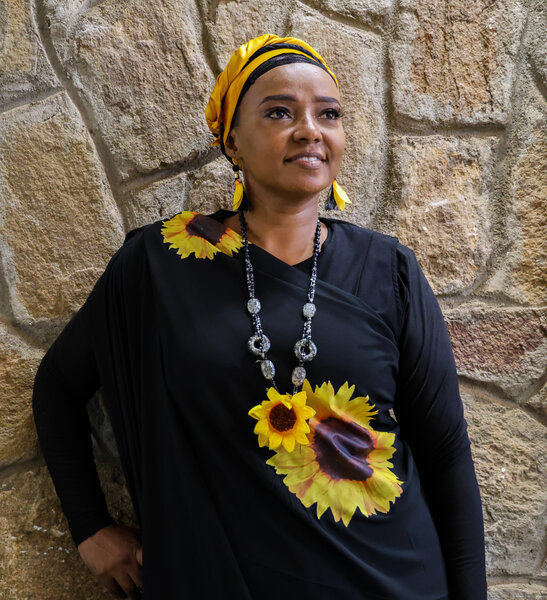
Taha came a long way from Khartoum to Juba, after years of working on traditional Sudanese dress toub. According to her, to get inspired by and try to refashion a simple piece of fabric was not easy. It was a complicated artistic assignment for Taha as the public did not understand that creativity cannot be restricted especially by culture.
‘I chose this traditional costume as a symbol for South Sudanese women, and then I decided to work on it, and spontaneously the creative idea of combining my paintings with the costume came out, and that was the beginning,’ she said. In her art, Taha represents a woman as a sign of love, peace, hope, resilience, passion and femininity, and that was obvious on her artwork. That combined with Lawa in her paintings made each piece say something about certain condition that woman lives. Cocoon threads tangle to form woman’s image, then put on Lawa, and from that moment the new creative look had to see the light. ‘The first time I tried this, the painting was not shown clearly, and I felt the necessary of making some changes to clear up my idea, then I made Lawa with one connected piece of fabric, printed my painting on it then put the knit part as additional part to it,’ she said. When looking at the history of Lawa, the development can be seen from just a piece of leather to coloured fabrics to more garnishes and glitter style, but Taha wanted to refashion a beautiful, simple and comfortable piece for the eyes, keeping the theme of simplicity as it was in the beginning, without altering its identity.
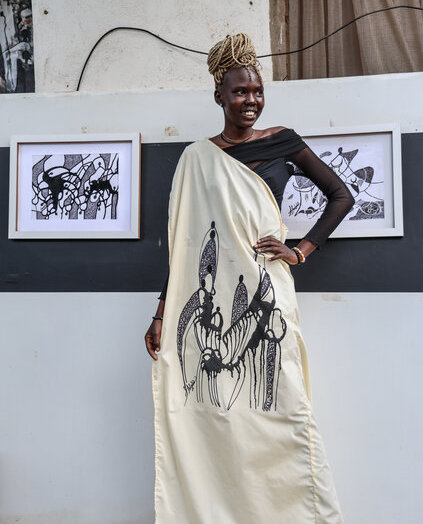
Anyone with a creative spirit is always seeking new things to try. Discovering a new aspect of art and the ability to recreate, Taha started discovering her journey with art at the Faculty of Fine Arts at the Sudan University of Science and Technology in 2004. She designed the logo of the Islamic studies unit when she was still a student. She is passionate about knowing the artistic aspect of everything even of medicine and health, and their relationship with art. This led her to work in the field of art therapy, getting deeper with research to know how colours, music paintings and songs can heal the mind.
‘I like teaching art, asking questions and being asked questions, which for me are like keys that open doors for new concepts and aspects,’ said Taha. Her Lawa exhibition sparked further questions concerning the traditional dress, the artistic process that she went through, and about working on a traditional dress that does not belong to her roots. These questions motivated her to keep working and challenging people with further questions in reply. This progress gave her the drive to keep refashioning Lawa from a feminine perspective, later discovering that there is a male version of it, which may also be refashioned. This might be her next artistic project.
The art scene in Juba is rich with many talented artists and designers from both Sudan and South Sudan. They now integrate better, contributing to Juba and South Sudan in general, with their artwork with messages of unity, love and peace, it could be the time now when people strengthen the roots of relationship, as well as new concepts challenging cultural norms. Art houses such as The Baobab House are always in the front line, to welcome initiatives that can bring the sons and daughters of what used to be one land to celebrate culture and diversity.
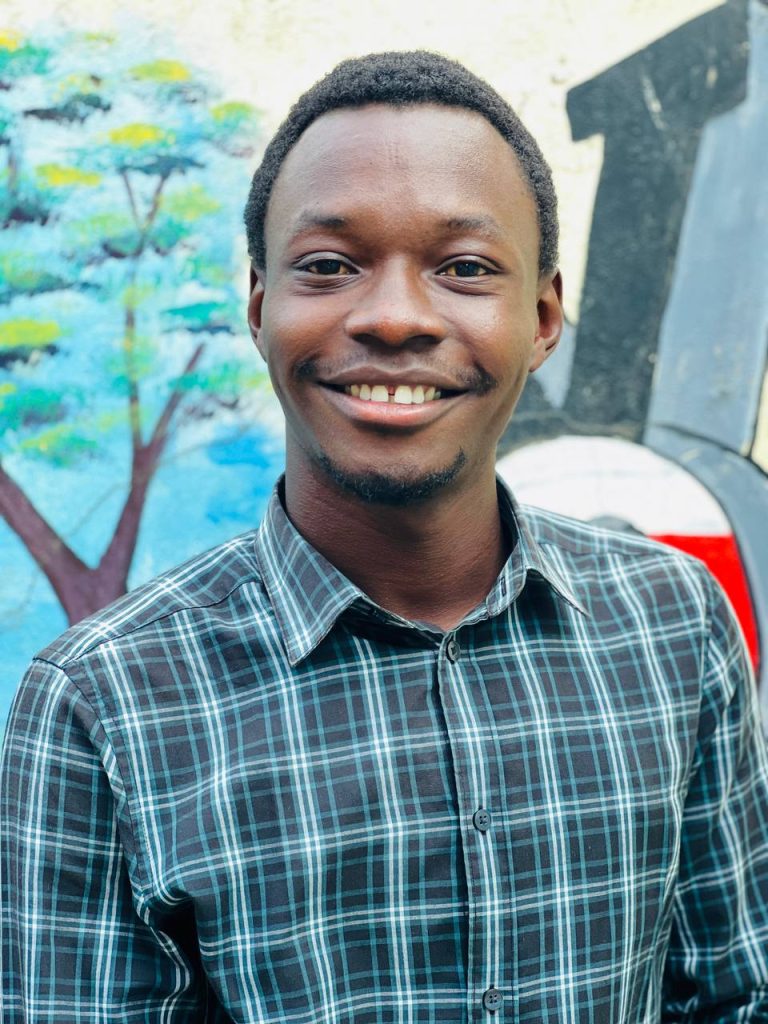
Butros Nicola Bazia is a 22-year-old South Sudanese medical student, who recently moved to Juba due to the ongoing war. He has a deep interest in art and culture. He works as assistant community manager and programme coordinator at Scenius Hub, and is the former radio producer at the University of Khartoum Radio.

